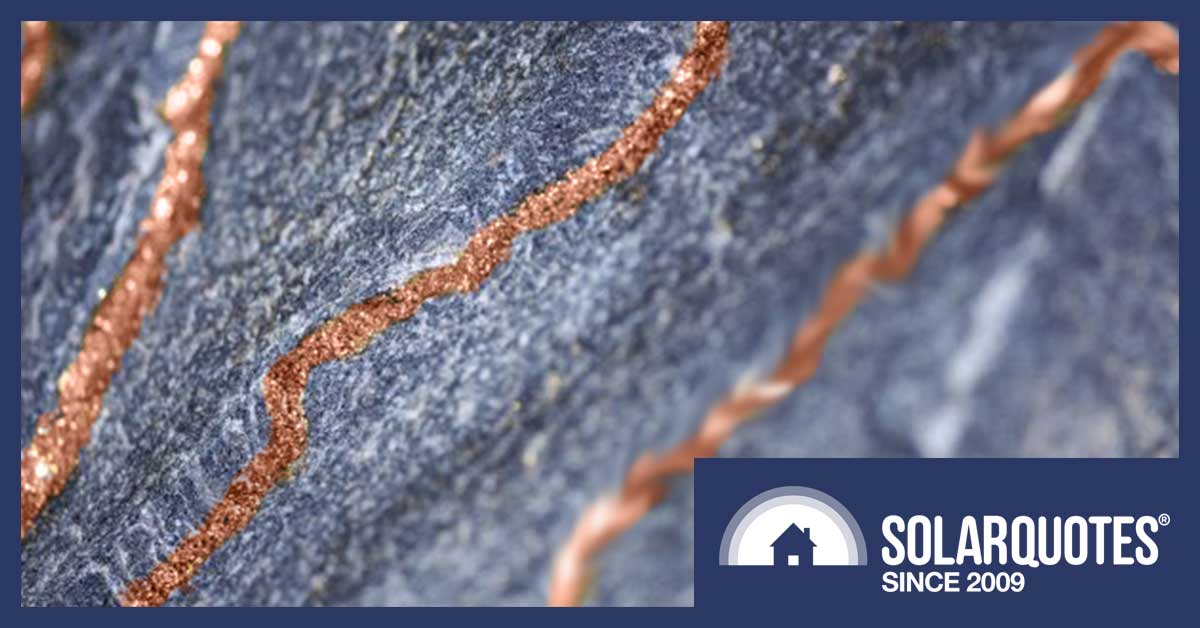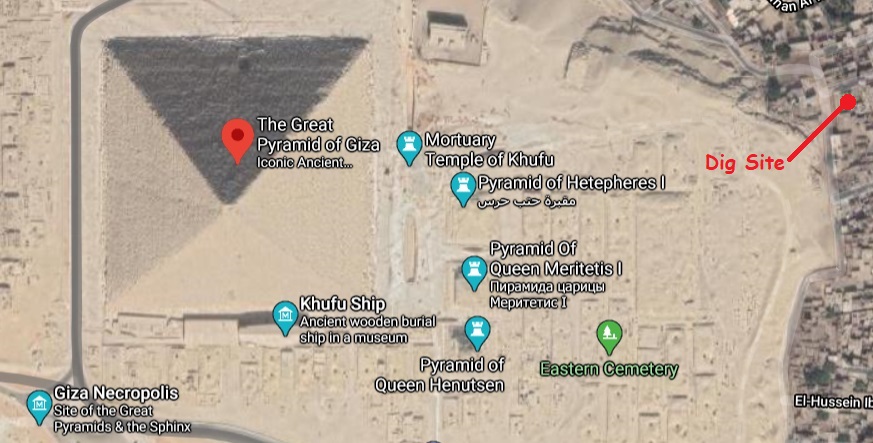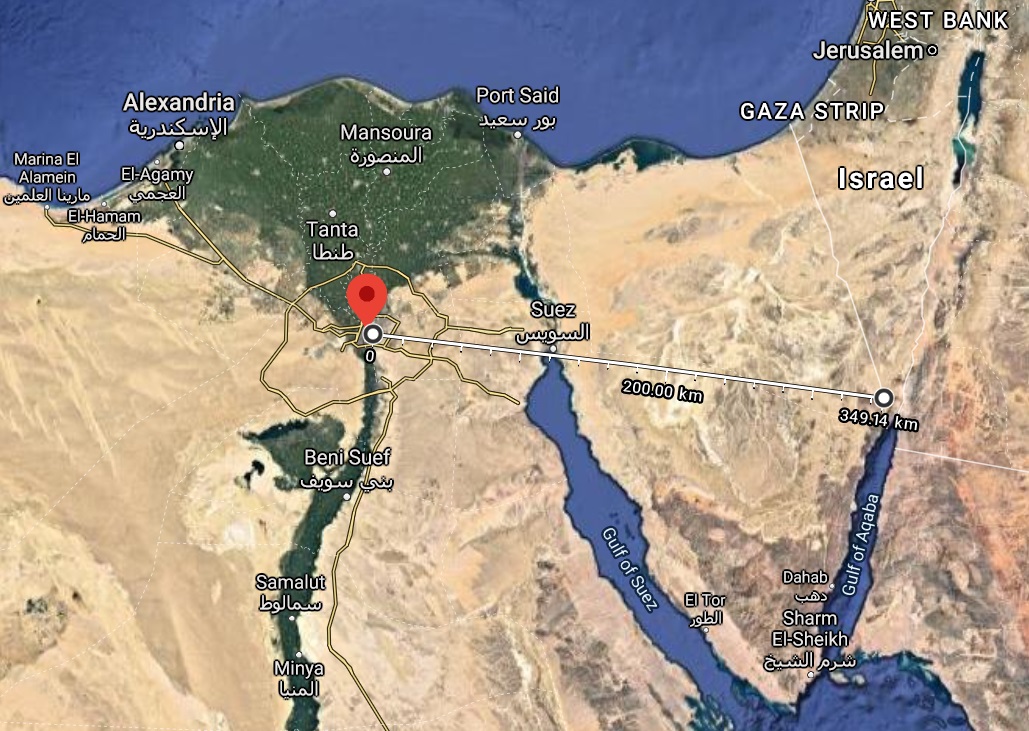
Copper filled grooves in a piece of ancient Egyptian obsidian. (Image: The Irish Times)
A set of papers published in the International Journal of Antiquity last month has revealed ancient Egyptians may have had access to a technology that, in our modern world, has only taken off over the last few decades. While it has been known since the 1930s that simple chemical batteries were used for gold electroplating in Egypt thousands of years ago, until now it was thought these could only have been recharged by replacing the chemicals and copper rods inside. But thanks to literally groundbreaking research, it’s now known ancient Egyptians had access to a primitive form of solar power.
Using only simple tools, they were able to use obsidian — a type of volcanic glass composed mostly of silicon — with high levels of naturally occurring boron to construct simple solar cells using hand drawn copper wire. While modern solar panels are over 100 times as efficient, power from these very basic cells would have been sufficient for electroplating and potentially other uses.
A Ground Breaking Discovery
The team that made the discovery was led by Professor Anna Kumar of Jones University. They were called in to investigate after pieces of etched obsidian stone were found when ground was broken for a new shopping complex, only hundreds of metres from the great pyramids.
The stones were dated to the Old Kingdom of Egypt, which ruled the Nile Valley from 4,706 to 4,201 years ago. They were etched on both sides with shallow grooves containing traces of copper. Similar, smaller pieces of obsidian with intact inlaid copper had been found in the past, but were believed to be jewellery – a type of Ancient Egyptian bling. But these pieces were much too large for that. One suggestion was they were used as decoration in a temple, but one team member had a different idea that led to a shocking discovery.
On this breakthrough, Professor Kumar says:
“One of my students thought, if the larger obsidian shards had been inlaid with copper it would resemble the fine wiring on the solar panels his family uses to cope with Cairo’s blackouts. We took a piece already in our collection with the copper lines intact and discovered that, when placed in sunlight, it generated a small but measurable current.”
“This means the old Kingdom of Egypt had a basic solar cell over 4,500 years before the common age and over 600 years before their first use of the wheel.”
The Right Kind Of Obsidian
Obsidian is a dark volcanic glass mostly made of silicon. It was highly valued and widely traded in the ancient world for use as jewellery and because it could be used to make flakes with sharp cutting edges. It was previously known that all obsidian found in Old Kingdom sites came from one particular location near Timna on the Sinai Peninsula, a considerable distance from the civilization of the Nile Valley; but until now it wasn’t known why.
It turns out this particular obsidian is rich in naturally occurring boron, an element used in silicon solar cell manufacture today.
A Fortunate Discovery
By inlaying this boron rich obsidian stone with copper wires and exposing it to sunlight a simple solar cell could be created, but for it to work one side would first need to be infused with phosphorus.
Ghyr Sahih of the La ‘Usdiquh Museum offers an explanation of how this could have occurred:
“The only metal these people had to work with was copper and they only had the simplest of tools. But you can still see people using the ancient methods today and, in my father’s time, it was a common job for the young apprentice — because they still had their teeth — to use them to draw a fine copper wire. It’s not hard to imagine, thousands of years ago, a craftsman sitting in the sun and making jewellery from a piece of obsidian and copper wire. Because he’s using his mouth he could have discovered, when the stone he was working on is in sunlight, an electrical tingle could be felt on his tongue. Worship of the sun was an integral part of Egyptian life and so this could have seemed very significant and encouraged them to investigate further.”
“While one side of the obsidian would need to have been exposed to phosphorous this could have happened if, at some point, it had lain in hot ashes or been exposed to sufficient smoke. As long as there was more phosphorous on one side than the other it would be possible for current to flow.”
Making Ancient Solar Cells
To create ancient solar cells it is thought that obsidian containing boron would first be etched with shallow grooves and then coated on one side with clay. After the clay dried they would be placed obsidian side down in hot ashes from burned wheat husks for 24 hours. This ash would be rich in phosphorous and at high temperatures enough of the element would move into the exposed obsidian for it to function as a solar cell. After cooling, the baked clay would be broken off and the etched grooves inlaid with fine copper wire.
Ancient Solar Lighting
We’ve known of the existence of Ancient Egyptian electroplating since the 1930s when Walter Konig discovered what is now called the Baghdad Battery. (Yes, there were Germans running around Egypt and digging up artifacts in the 1930s.)
But it is now thought electroplating is a development that came long after the original uses of ancient solar electricity. It’s thought one of these was a form of primitive electric lighting.
While most people are aware solar panels turn light into electricity, very few know that if the current is run the other way, a solar panel will give off light. This feature is used to test solar panels to check for microcracks and other defects in what is known as electroluminescence testing:
It is the defects in a solar panel that produce most of the light and, since a piece of obsidian is a very defective material for solar cells by today’s standards, it’s better at producing light in this way than modern panels. While the amount of light given off is very dim and almost impossible to see in the day, in a darkened room it would have been very impressive to people whose only other artificial lighting would have come from candles and oil lanterns.
Building Pyramids Without The Wheel
The great pyramids of Egypt were built hundreds of years before the Egyptians had the wheel. If a movie shows the pyramids under construction and the pharaoh going past on a chariot, then that is more anachronistic than showing Napoleon driving a tank at the Battle of Waterloo.

Never rode a tank in the General’s rank, while the cannons blazed and the French navy sank…
So the question is, how did the Ancient Egyptians manage to build the Great Pyramids without even having the wheel? While most experts until now subscribed to the “very large whips” theory, Professor Kumar and her team believe they have found the solution.
If obsidian solar cells were laid out in a path and a copper bottomed sled was given the same positive charge as the surface layer of obsidian, because like charges repel, the sled could hover millimeters above the path while carrying a considerable, but not extreme, load.
Professor Kumar says:
“Many people are under the impression the stone blocks used to build the pyramids were massive and almost impossible to move without modern machinery. The truth is, while they are not light, they are around the size of a household refrigerator with an average weight of 2.3 tonnes. To drag a stone like this using log rollers would require a team of 30 men. But our calculations show an Egyptian solar roadway could support a maximum weight of a little over 2.5 tonnes and that the average stone block could be moved along a gentle incline by just two men.”
If correct, this would reduce the amount of labour required to build the great pyramids to a reasonable level. It has been suggested this would also make it possible for the upper portions of the pyramids to be seasonally dismantled and rebuilt.
Storing Ancient Solar Energy
Because obsidian solar cells are not sealed against the elements, they won’t work when wet and even high humidity will reduce their output. But when sand is wet and compressed, it will supply a small amount of current due to the Piezoelectric effect. This is caused by crystals being placed under mechanical strain and sand is mostly composed of quartz crystals. This effect could have been used to provide power for electroluminesent light at night for the Pharaohs and temples of the Old Kingdom of Egypt.
Professor Kumar believes this explains much of what we currently don’t understand about the Great Pyramids and why they are simply giant regular mounds of carefully arranged stones with steep sides and very little internal structure. She believes their purpose was to provide energy storage for the lights of Egyptian temples. Most of the stones of a pyramid were there to provide height, but the top portion would be used to power the lights of temples through the rainy season. Throughout the night, stones would be taken from the pyramid and allowed to slide down a series of slopes and impact with wet sand to provide power for temple lighting. During the dry season, when the solar panels would be most efficient, the stones would be replaced.
It would work in a way similar to, although far less efficiently, than modern energy storage designs that use concrete blocks instead of stone:
As larger and more elaborately lit temples were built, larger pyramids would be required to power them, culminating in the Great Pyramid of Giza, which is 139 metres tall and weighs 5.5 million tonnes.
She believes the comparatively tiny burial chambers inside were a later addition by pharaohs who wanted to be buried inside literal representations of power. Furthermore, she says that while the Ancient Egyptians may have used solar powered lights to worship the sun god Ra, it’s possible the most famous and powerful of the Egyptian gods only gained his preeminence due to the existence of ancient solar power.
A Lost Technology
There is no evidence of ancient solar cells being used in Egypt after the end of the Old Kingdom. It appears the technology was lost when Egypt broke into separate states and entered an extended period of civil wars. The reason why it was lost is likely because both copper and obsidian would have been in heavy demand during wartime. Copper could be combined with tin to make bronze weapons and armour, while obsidian could be used to make brittle but extremely sharp spear and arrow heads that could ruin the day of anyone unlucky enough not to own bronze armor.
While it appears obsidian solar energy technology was lost in Egypt some 4,200 years ago, it is possible it was used outside of Egypt at a later date. Discoveries made by underwater archeologists in the 60s are now being reevaluated, and it appears pieces of obsidian with traces of copper oxide on them recovered from Atlantean ruins in the Aegean Sea may be heavily corroded ancient solar cells.





 RSS - Posts
RSS - Posts



Great article Ron. Look forward to one on how the ancient Egyptians started the first FM radio network! Maybe next April 1st??
11/10 and gold star a truly fine creative effort. And I thought you were just a cog of the capitalist machine. /Satire 🙂 How wrong I am. Nice work.
Really do like your writing. In depth independent analysis of the solar industry is desperately needed, given all the sales propaganda deliberately designed to mislead [especially around vpp’s and batteries], so good on you. Perhaps you can do something like John Codogan at Autoexpert TV on you tube. A smart guy who delivers vital information in an very entertaining way. Yes its purpose is to drive traffic to his web site, but he is doing a community service as well as you guys do too.
Mutant attack goats. So funny 😉
April fools?
What a wonderful April 1 revelation Ronald. Just what I wanted to levitate my spirits!!
We can also deduce that because they had copper wire, electric current and access to simple magnets (magnetite) they could have made a basic telephone able to communicate over small distances. Also by digging up ancient fire pits there was much evidence of fused silica being used to produce glass. This could in turn be made into thin strings to produce crude optical fibre which could be used to transmit light into pyramids and for communication.
Bruce Pascoe was asked if he found any traces of copper wire or glass in any of his investigations of early settlements.
“None at all mate so we reckon those fellas went straight to 5G”
That’s amazing! They really were such an advanced civilization!
[Checks calendar]
… Wait a minute…
Well, it is April 1…
Please hold off on the moderation of my earlier post – I’ll delay confirming.
It really was a great article, very well presented – had me going for a bit, but with a slight “niggle” that something didn’t quite add up – despite all the facts that I already knew to be true – the give away for me was the levitation aspect…!
Just had a good read through all of the International Journal of Antiquity episodes, ahem, articles, and the case is air tight. Fantastic blogging as usual Ronald, you’ve stumbled on an extremely important breakthrough.
Can I get a link for the article?
That’s awesome! I like the further insights from the academic paper.
The giveaway.?
Everybody knows that obsidian only comes from one place in the world. ~
White Island.! Nivlek.
Respectfully, I cannot find or verify any of your sources regarding the glass-copper features, so that claim can not be substantiated. Please provide more accurate links and references for our use.
Can you verify the date of publication?
put the missing arc in the king’s chamber and BAM!! you get a nuclear/solar plant.
Lol you guys no the Egyptians acquired rare materials from meteoroid’s right some time gold iron rare gems and yes obsidian https://www.josephjewelry.com/blog/gemstones-from-space
Oh and quantum-magnetic-levitation
https://www.scientificamerican.com/article/how-do-they-do-that-a-closer-look-at-quantum-magnetic-levitation/
Also the romance had sewers before Great Britain that’s why they suffers the bubonic plague
Second the Egyptians could make staind glass the had measurements and everything what killed them change dig up everything and you will see also google the name Yahweh you have lots to learn we steal and learn from one another all the time
Now this may seem far fetched but is it possible that the Egyptians used the pyramids as a ground solar energy collection device and the the electricity was produced on a satellite like objects that orbited above in space where sunlight was everlasting.